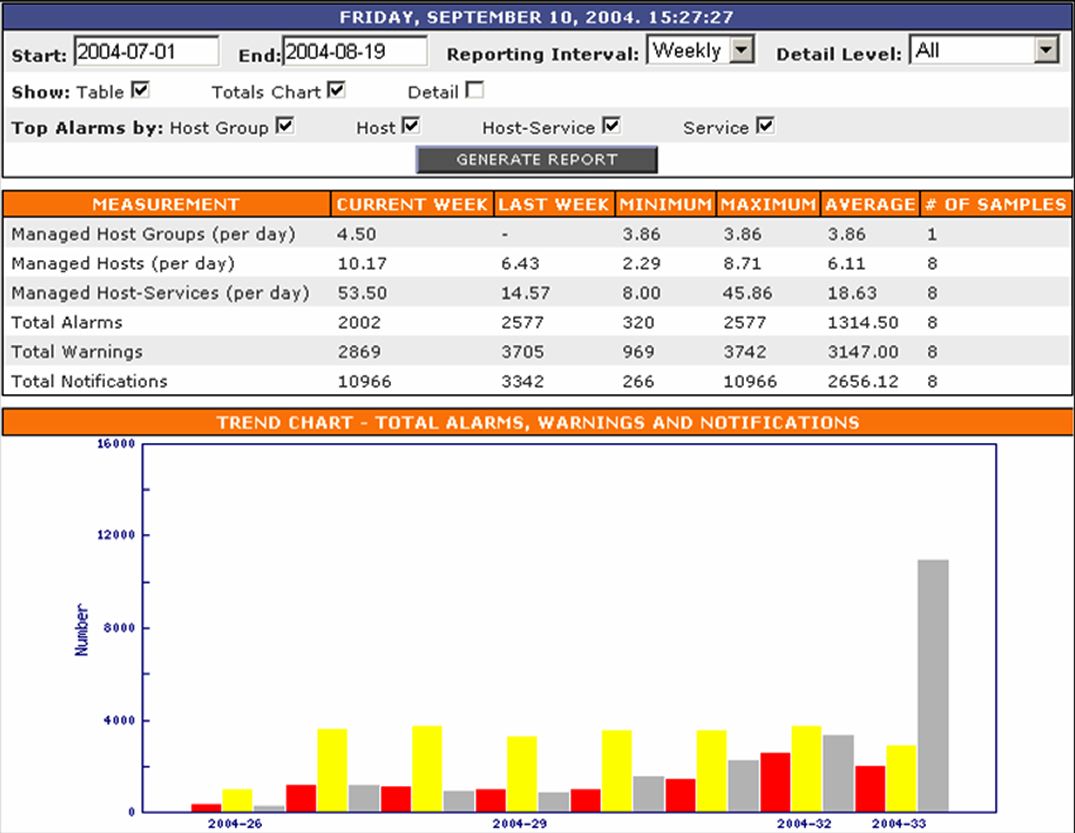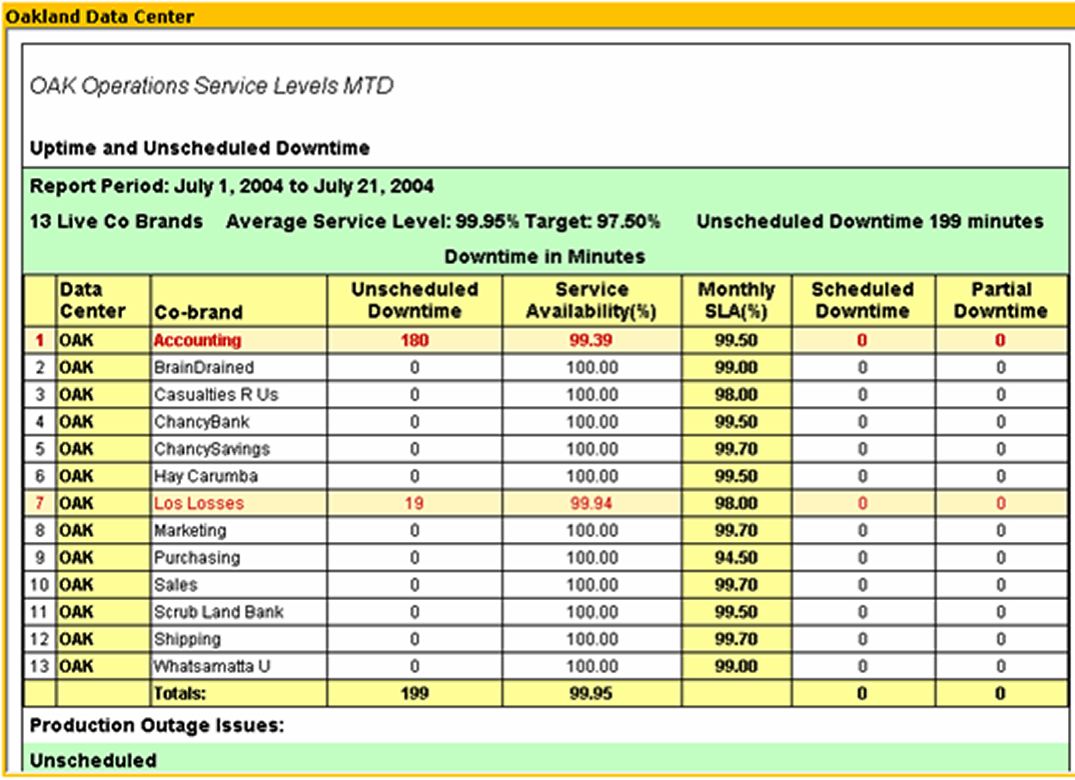The $3.6 billion worldwide market for IT management software is ripe for competition from free software. Leading products from HP, CA, BMC and IBM are overkill for the vast majority of the market. Licensing costs can reach seven figures, and deployment and system administration costs are several times that. Not to mention that these products are widely known to be inflexible, monolithic and difficult to use.
At the same time, free software has penetrated close to three-quarters of all multi-billion dollar corporations and growth continues steadily. Industry research confirms that the primary reason IT organizations purchase free software solutions is the opportunity to reduce costs and improve technology performance. While leading products such as Linux, Apache and MySQL have generated the most attention, free software tools for IT management such as Nagios have matured and are poised for mainstream adoption. Since 2001, there have been 468,000 downloads of the Nagios program itself plus 221,000 for its plugins. Users include industry giants like ATT Wireless, Siemens, AOL, TicketMaster and TimeWarner Cable.
While leading products such as Linux, Apache and MySQL have generated the most attention, free software tools for IT management such as Nagios have matured and are poised for mainstream adoption
Combating inflexible platforms and vendor lock-in
Free IT management products are successfully competing against proprietary rivals—and for good reason. Proprietary IT management software tools and “platforms” such as HP OpenView and IBM’s Tivoli are difficult to configure and resource-intensive to manage. Such IT management solutions have been designed for the top tier of enterprise customers. Feature-rich and unnecessarily complex, they are replete with functionality that just isn’t needed by the vast majority of users. Increasingly inflexible and sclerotic, these IT management frameworks are hard to customize and difficult to configure. Deployment times can take **** months, even years, before value is achieved. And once they are installed, users face rigid vendor lock-in scenarios.

Instead of being confined to a framework that precipitates add-on costs and maintenance fees (and limits future options), a free platform enables companies to easily link together existing monitoring tools and integrate new ones. Free IT management solutions can be customized to customer requirements given their configurable component architecture as well as their transparent, modifiable source code. They are also well suited to heterogeneous management tool environments, given their open interfaces. These free alternatives make an ideal “manager of managers” platform or can integrate as a peer to incumbent systems. They are also stable and reliable, having been broadly tested and peer reviewed.
Lowering TCO
Enterprises have expressed strong interest in cheaper alternatives that meet their IT management needs. Today’s proprietary IT management solutions typically require significant upfront license costs alone, with deployment and management costs running from $5 to $8 for every dollar spent on software. According to Forrester Research, 86% of companies indicate that low acquisition cost is the major reason for their decision to purchase free software, followed by 77% that express an expectation that they will lower their total cost of ownership. Likewise, according to Delphi Group, the biggest benefit driving the use of free software is total cost of ownership.
Whereas a framework solution may run in the six figures and offer 100 different features, a company needing only 5% of that functionality can pay just for those requirements
Free IT management solutions have proven to significantly reduce the total cost of ownership through efficiencies in several areas:
- No licensing fees. Because the software is free, customers pay only for enhancements, services and support.
- Lower deployment costs. With free software solutions, you don’t install unnecessary features. This means that deployments are completed more quickly and easily. Companies save money by only paying for the features they need. Whereas a framework solution may run in the six figures and offer 100 different features, a company needing only 5% of that functionality can pay just for those requirements.
- Low system administration overhead: You only manage what you’ve installed. Free IT management solutions represent much lower administrative costs than proprietary alternatives. And because they are efficient without offering gratuitous features, they don’t require expensive vendor-specific consultants and training.
- Low hardware costs: Free products typically run on inexpensive Linux boxes, further lowering overall costs.
A thriving free software ecosystem
While the IT management market finds itself faced with increasingly frustrated users of proprietary solutions, free software alternatives have emerged, which demonstrate highly competitive functionality. There are an abundance of free IT management products that stack up well against commercial alternatives, including Nagios for IT monitoring; RDTool for analytical graphing; Multi-Router Traffic Grapher (MRTG) for network device statistics; Nmap for network scanning and discovery; Ntop for network traffic analysis; SyslogNG for log file analysis; and Cacti for SNMP analysis and performance graphing. These products provide strong core functionality as well as some limited testing and support.
A number of companies offer the supporting elements for a complete solution: from usability, services, support, documentation and updates to integration, validation, testing and a sustainable knowledge base
A growing ecosystem has also developed to help prepare the way for mainstream adoption of free IT management products. A number of companies offer the supporting elements for a complete solution: from usability, services, support, documentation and updates to integration, validation, testing and a sustainable knowledge base. SourceFire, for example, offers real-time network defense solutions based on free software. GlueCode provides a free Java application platform. And my own company, GroundWork Open Source Solutions, offers a free monitoring tool as well as associated deployment, consulting and support services.

There are a significant number of free software projects dedicated to solving IT management problems. More than 70 consulting firms support Nagios. There are also a great many free integrators supporting free IT management. Europe has even more activity—no surprise given its track record as an early adopter of free software.
The tide is turning
More and more companies are opting to go with free IT management tools. There is also evidence of imminent defections among current users of commercial framework solutions. According to an as-yet-unpublished report by a respected IT research firm, 29% of CIOs and senior IT managers using HP OpenView, CA Unicenter, BMC Patrol or IBM Tivoli indicated they would consider switching to free software for IT management.
According to an as-yet-unpublished report by a respected IT research firm, 29% of CIOs and senior IT managers using HP OpenView, CA Unicenter, BMC Patrol or IBM Tivoli indicated they would consider switching to free software for IT management
Free software incumbents in IT management demonstrate significant compatibility with technologies in the enterprise. They easily integrate with existing solutions without requiring dramatic changes to an IT infrastructure. And unlike many proprietary framework technologies, they are stealth by nature, enabling companies to incrementally embrace free software without necessitating major infrastructure modifications.